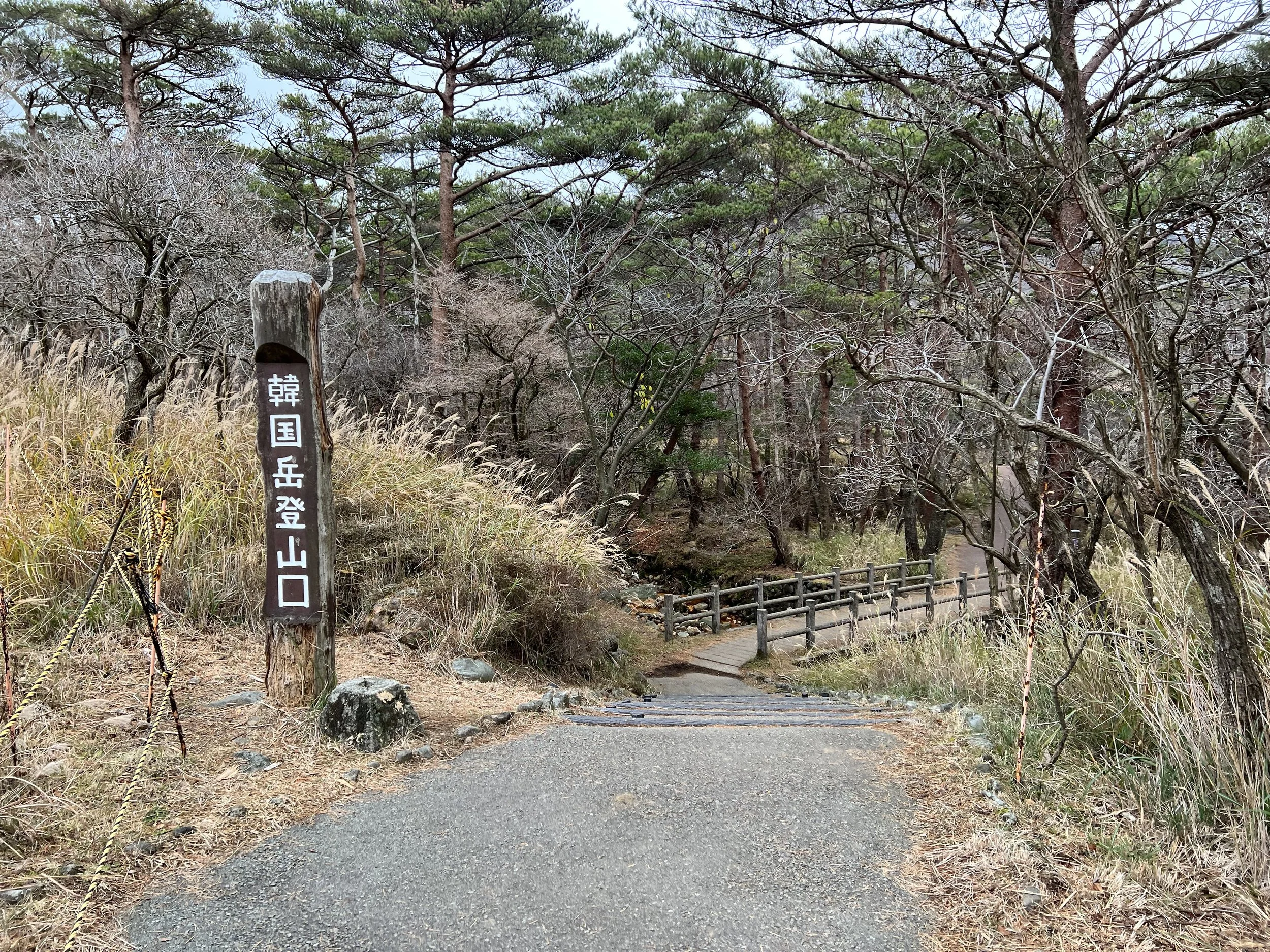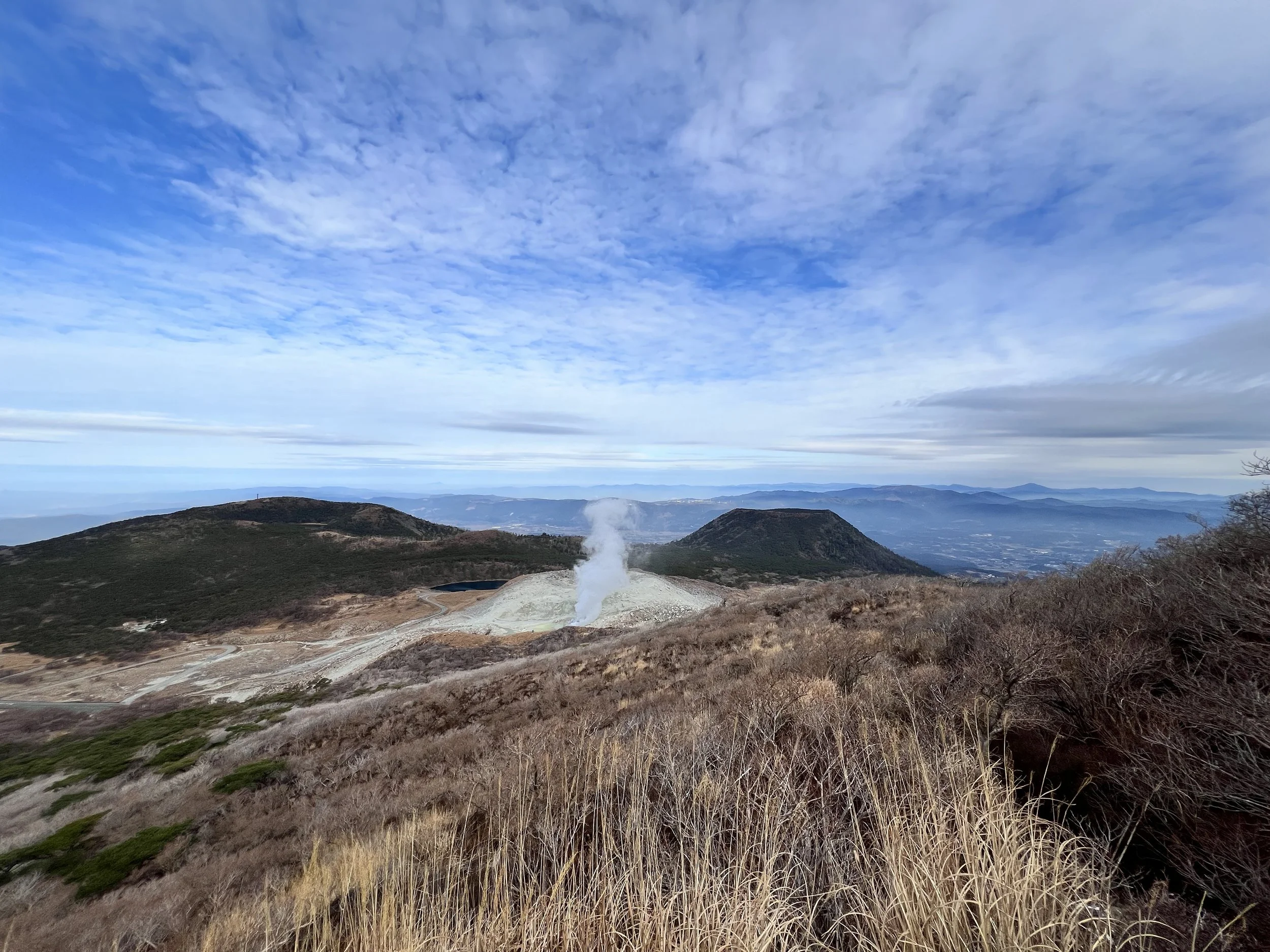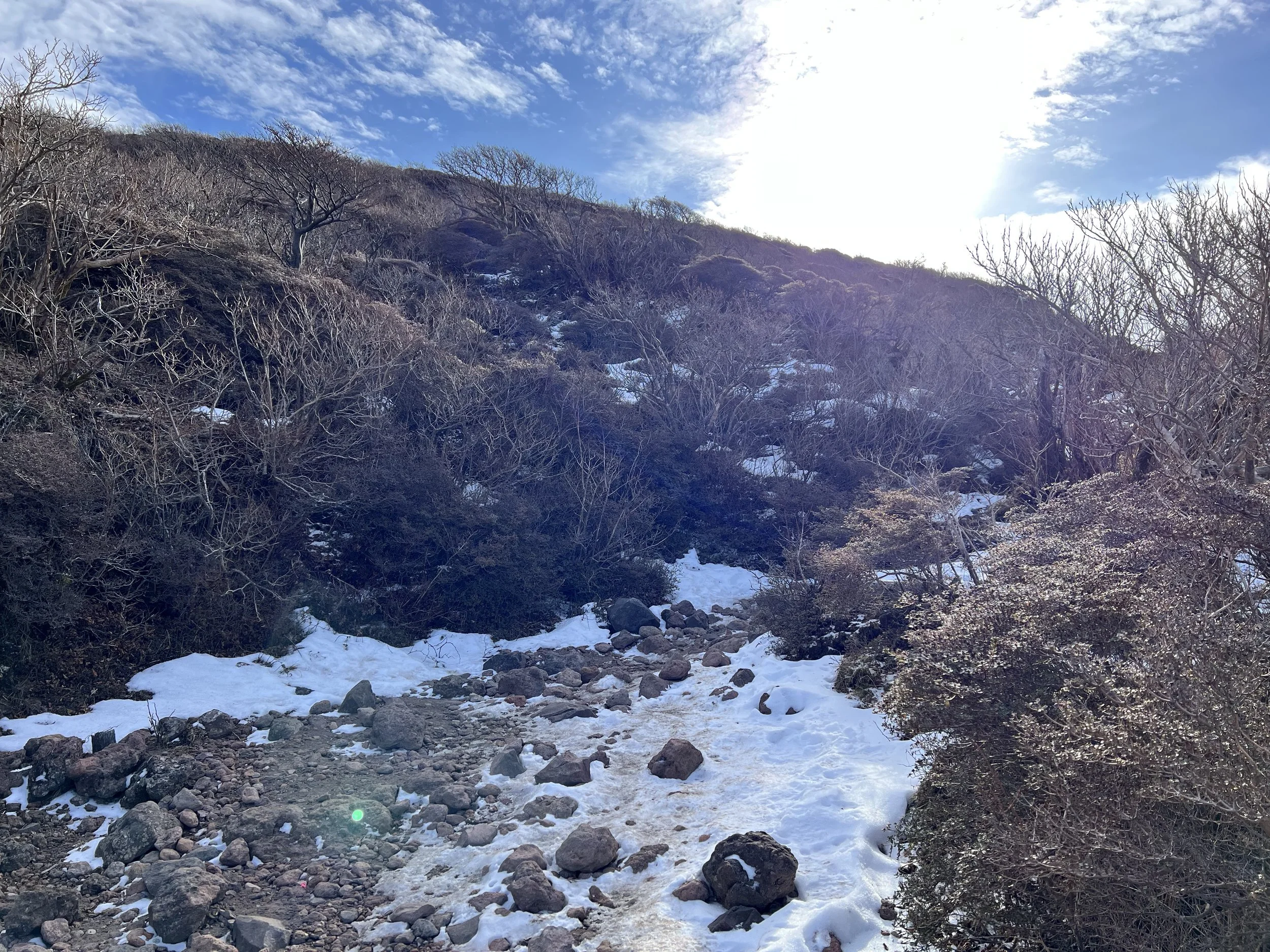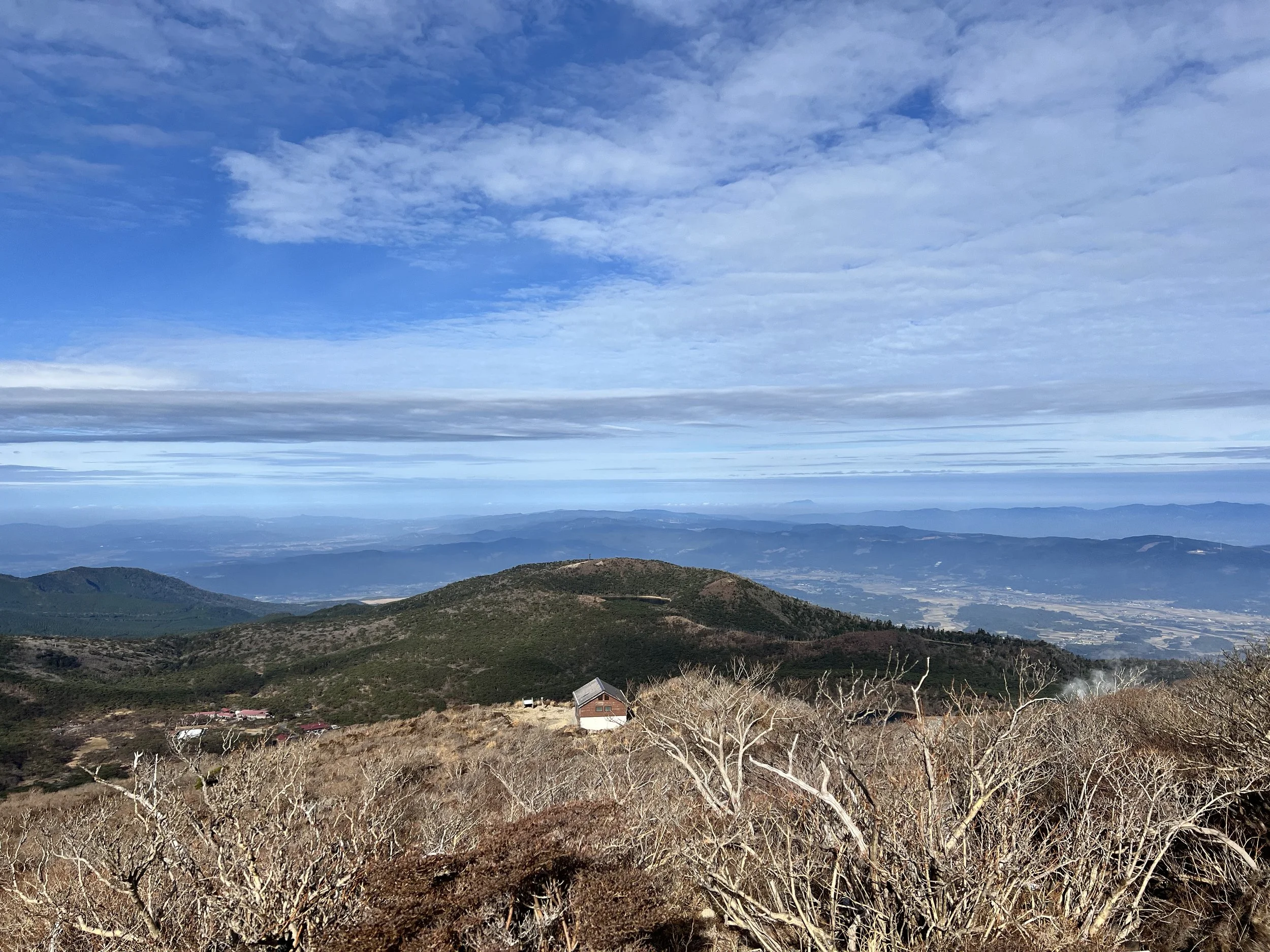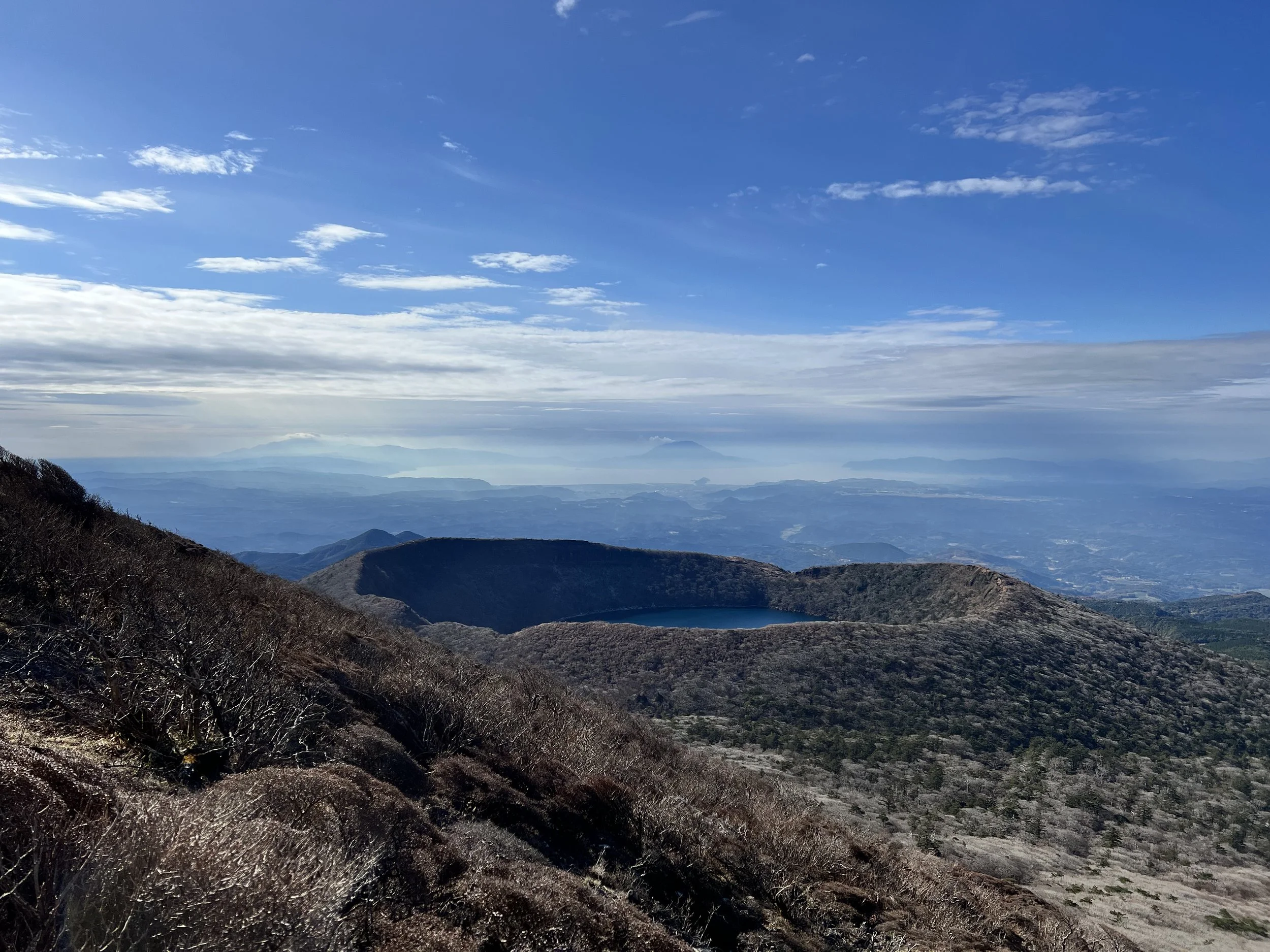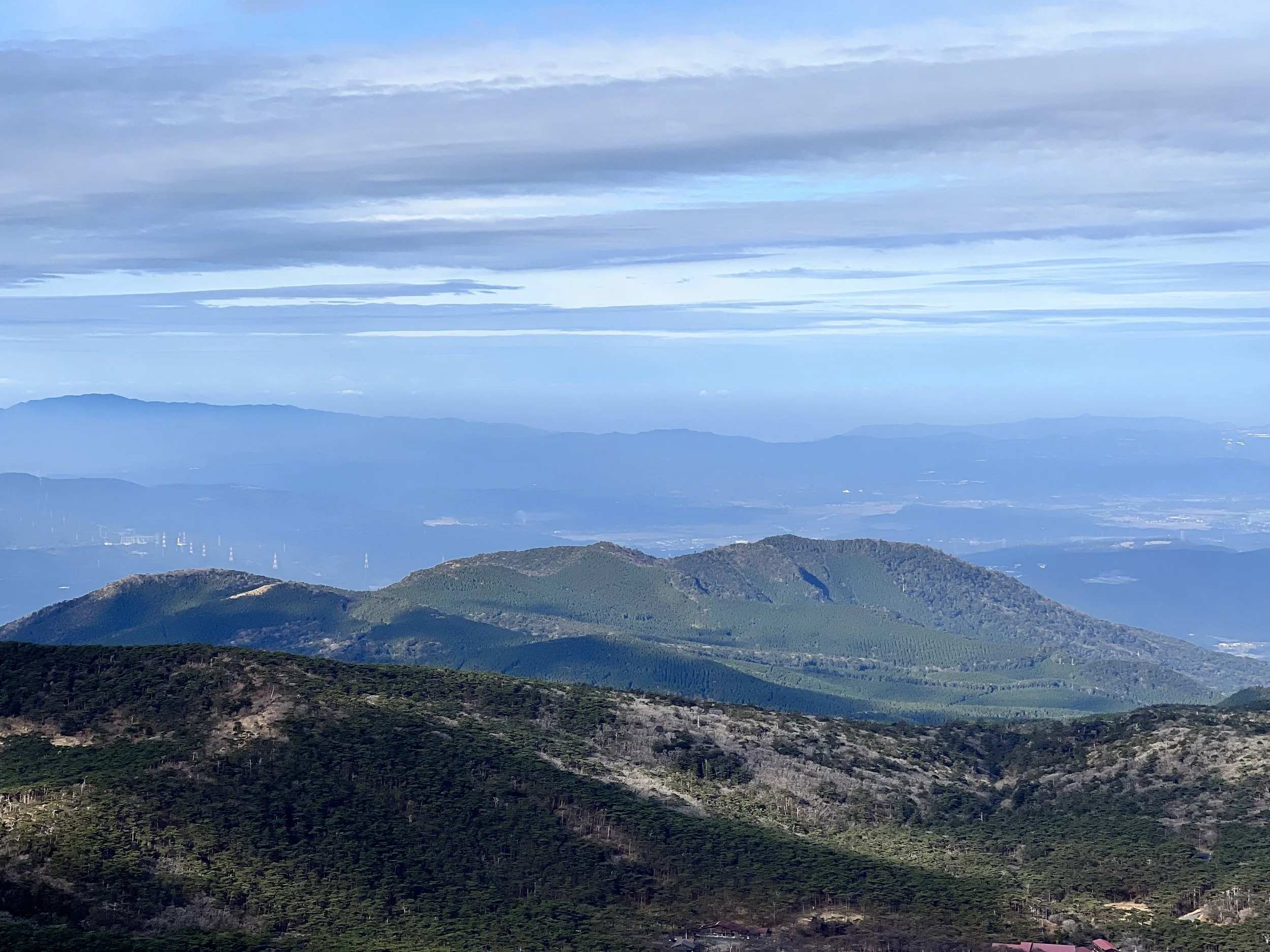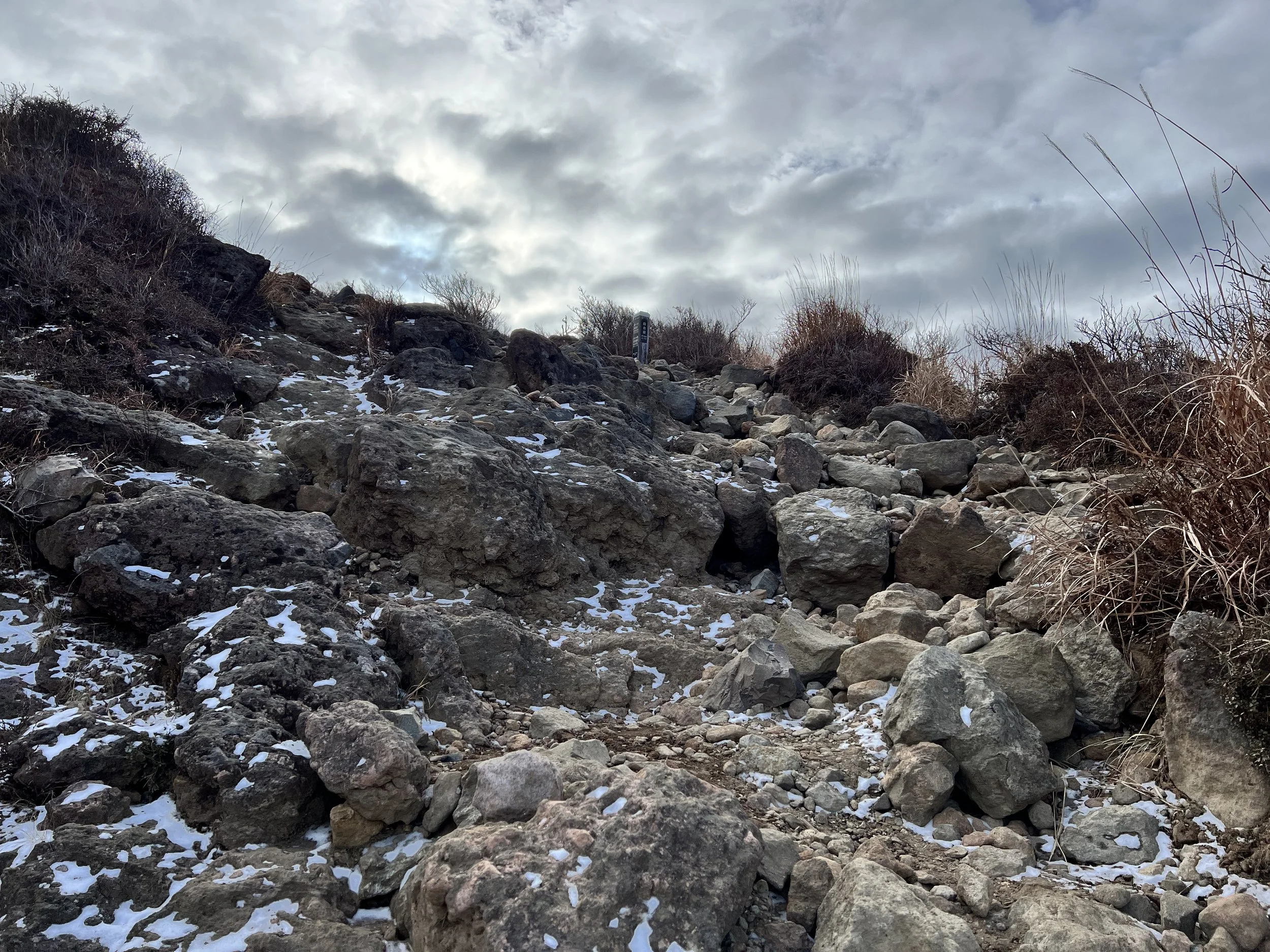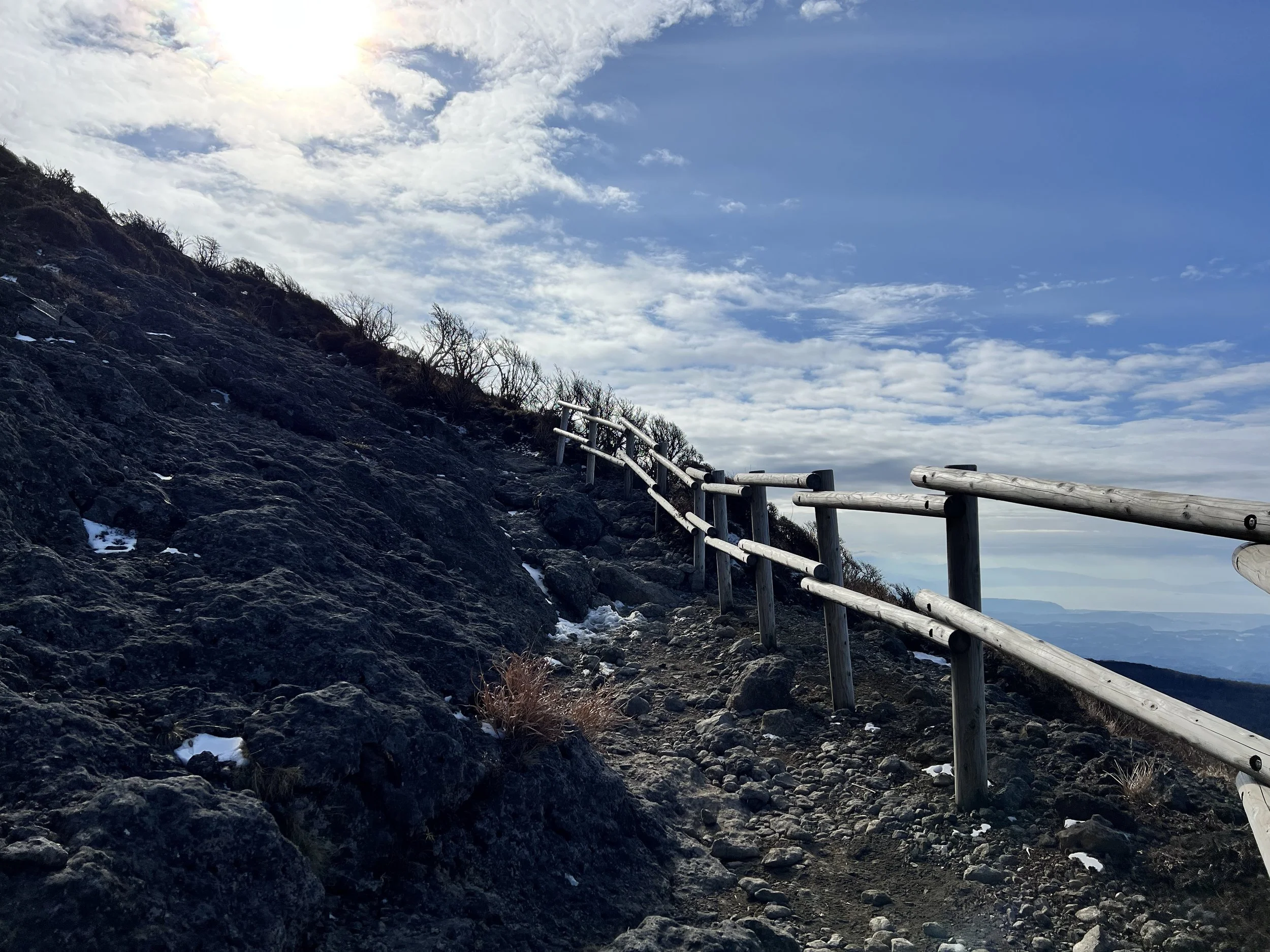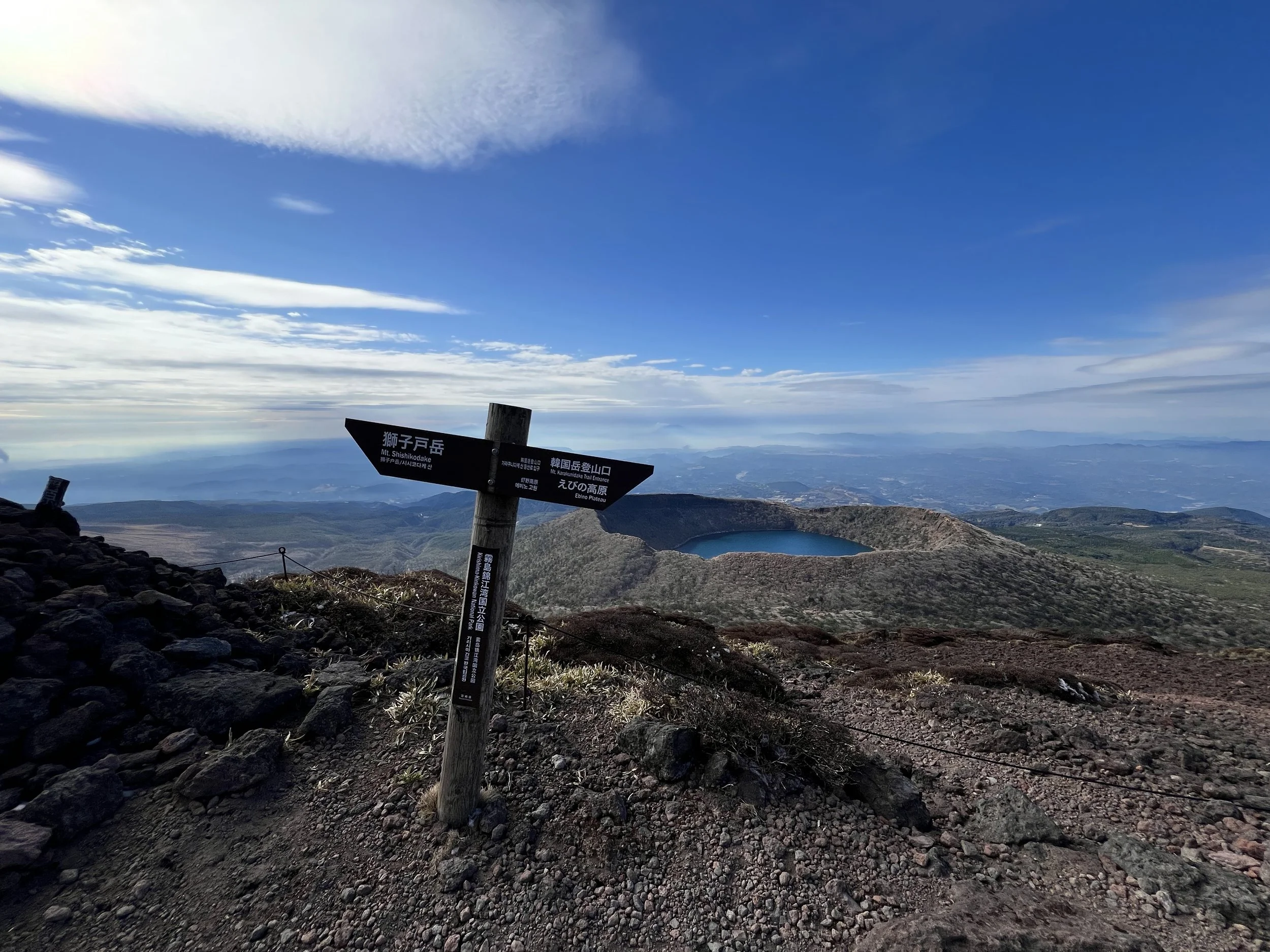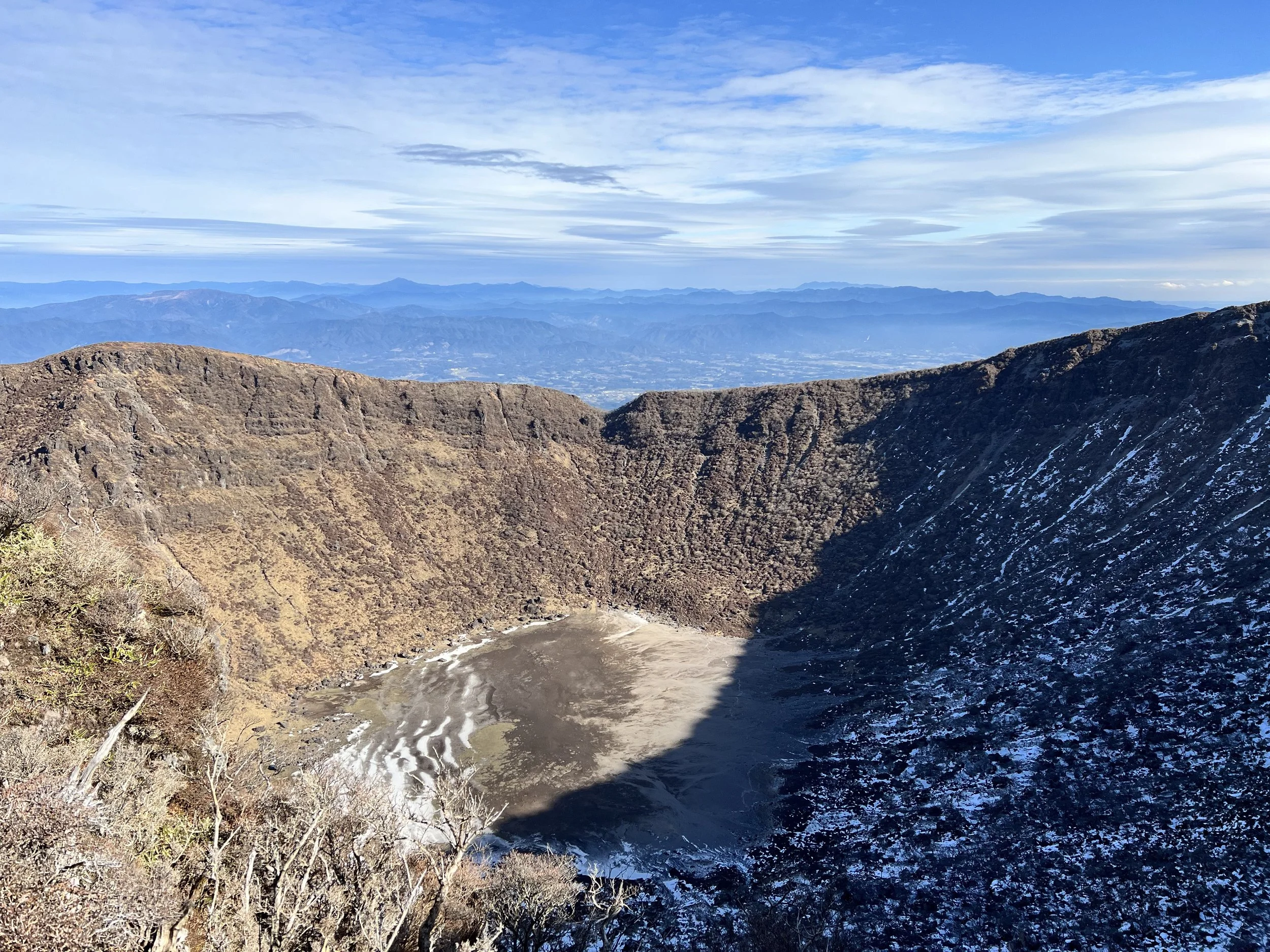Mount Karakuni - Miyazaki, Japan
The timing for transportation wasn’t ideal—I had to wait about an hour at Kirishima Jingu Station for the bus to Ebino Kogen. I purchased a 1-Day bus pass, which was a better deal than paying for a one-way ticket, as single rides were significantly more expensive.
Mt. Karakuni rises to 1,700 m, but the trailhead starts at 1,200 m, so the elevation gain wasn’t too strenuous. Before setting off, I completed the hiking registration. The trail had patches of snow but was well-marked and generally manageable.
Looking back, the panoramic view of the Ebino Plateau and distant volcanoes was breathtaking. As I neared the summit, the crater lake came into view. I had planned to rest at the top, but the temperature dropped sharply, so I didn’t linger.
The initial descent toward Lake Onami was steep—about a 49% slope—with loose volcanic rock, making progress slow; it took considerable time to cover just 1 km. Once I reached the wooden stairs, the trail became easier, though some steps had large gaps or were rotting, so caution was still needed.
Further down, the trail improved but grew muddier. I made a half-loop around the lake and exited via the Lake Onami Trailhead. Arriving at the bus stop with 15 minutes to spare, I found a volcano shelter with informative displays about the crater lake and local geology. I read through them while snacking, making sure to catch the second-to-last bus out of the area.
Background
Mt. Karakuni (韓国岳, 1,700 m) – The highest peak in the Kirishima volcanic range, Mt. Karakuni is an active volcano with a crater that occasionally emits smoke. The mountain and surrounding plateau have been significant for centuries, both for local Shinto worship and as a natural landmark in southern Kyushu. Its volcanic activity has shaped the Ebino Plateau, creating crater lakes, hot springs, and unique alpine vegetation. Hikers are drawn to the summit for sweeping views of the plateau and the distant Kirishima mountains.
Ebino Plateau (えびの高原) – A scenic volcanic highland known for its crater lakes, volcanic fumaroles, and alpine flora. The area has long been a destination for nature enthusiasts, pilgrims, and scientists studying volcanology. The plateau’s trails and lakes, including Lake Onami, were formed by eruptions thousands of years ago and remain a showcase of Japan’s volcanic landscape.
Lake Onami / Onami Crater (大浪池) – A volcanic crater lake on the Ebino Plateau, formed by past eruptions of Mt. Karakuni. The lake and surrounding terrain highlight the volcanic activity of the Kirishima range and provide dramatic scenery for hikers.
Getting There
To reach Ebino Plateau, travel to Miyazaki or Kagoshima first. Renting a car is the most convenient way to explore the area and access off-the-beaten-path spots. If relying on public transportation, expect one or two transfers involving trains and buses.
I started from Kagoshima, taking the train to Kirishima Jingu Station. There, I purchased a Kirishima 1-Day Bus Pass, which offered better value than single fares. Note that the bus schedule isn’t available on Google Maps—check the Kirishima City website (Japanese only). Bus service is limited, so plan your arrival and departure carefully.
Volcano Status & Safety
Mt. Karakuni is an active volcano. Before visiting, check the latest volcanic activity updates from the Japan Meteorological Agency or local visitor centers. Some trails may be temporarily closed due to safety concerns, so planning ahead ensures a safe and enjoyable hike.
Route Overview
Distance: 8.21 km (Ebino Kogen Visitor Centre → Lake Onami Trailhead)
Total elevation gain: 624 m
Duration: 3 hr 19 min (with breaks 3 hr 28 min)
Difficulty: Hard
Peaks: Mt Karakuni 韓国岳 1,700 m, Onami Crater Lake 大浪池 1,411 m
Cost Breakdown
Train: Kagoshima Chuo Station → Kirishima Jingu Station — ¥2,080
Kirishima 1-Day Bus Pass: ¥1,100
Food: ¥200

